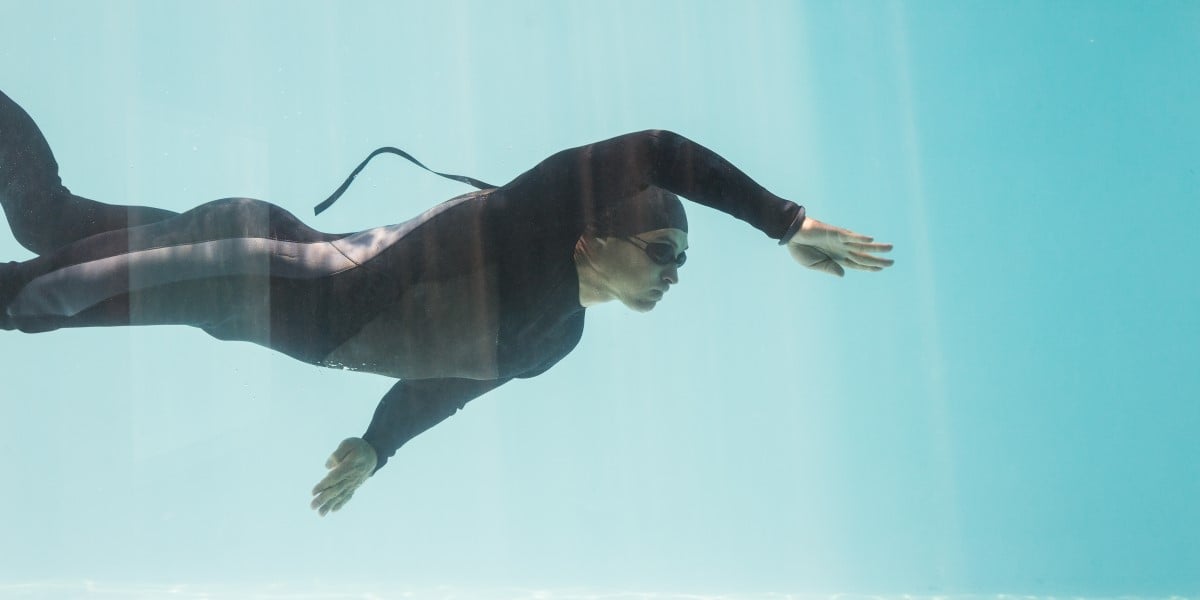One stroke at a time; addressing the chlorine shortage for UK pools
The familiar combination of Brexit, production in China, and the supply chain have stuck again. They have changed our shopping habits, left our fridges empty, and now they are closing our swimming pools.
The UK is beginning to grapple with a chlorine shortage that is predicted to get worse over the summer months. In this blog, we look at why there is a chlorine shortage and a solution that could allow swimming pools to go bought-in-liquid-chlorine-free.
What’s causing the chlorine shortage in the UK?
There is no one reason; the answer to this question is both global and local.
First, Covid-19 caused a backlog in China, which has still not been completely resolved, so we are still suffering from the knock-on effects. Added to this is the fact that there is now only one route for China to ship chemicals to the UK via Antwerp. China also reduced its manufacturing output and closed down non-compliant factories before the winter Olympics in early 2022 in an effort to reduce environmental pollution.
Other global issues have also played a role in reducing the supply of chemicals to the UK. The international transport crisis had an effect, as did a fire in Optima Chemicals facility in Belle, US in late 2020. The war in Ukraine has also taken its toll on the chemical supply chain.
Moreover, Brexit has been a disrupting factor for trade over the past couple of years. Manufacturers now have to obtain different regulatory approvals for the UK and European markets at a cost of £100,000 per product. This has resulted in some suppliers not applying for licences but, instead, buying supplies from bigger suppliers. And there are only two left in the UK.
Lastly, there have also been domestic problems contributing to the shortage. INEOS temporarily closed its factory in the UK this year. The chemical company is the country’s main manufacturer of sodium hypochlorite (a liquid form of chloride). In addition, there has been a national shortage of calcium hypochlorite (a solid form of chlorine), which has increased prices by up to 60%.
Which pools have been affected so far?
Many pools around the UK have not had enough supplies to generate their own supply of chlorine. Councils are advising that more disruption could be seen over the summer. Here are some places that have been affected so far:
- Brighton and Hove Council only has supplies until June and will prioritise the city’s main pool facilities if any closures are necessary.
- Saxon Pool in Biggleswade, Bedfordshire, has been closed to general swimmers since 6 May. It is only open for swimming lessons and a swimathon event.
- Runnymede Leisure Centre in Benfleet closed its pool in April. The chlorine it used came from Japan and was supplied by a German company, citing supply issues, including the war in Ukraine, as the problem.
- The pool at the University of East Anglia closed for almost a week due to its depleted stores of chlorine gas.
- The Mill House Leisure Centre in Hartlepool closed for several days earlier this year.
Why is chlorine important in pool treatment?
Chlorine kills bacteria such as salmonella, E. coli, Legionella, Pseudomonas, under control. Although the chlorine shortage is not expected to be a long-term problem, swimming pool managers need to have a guaranteed supply of chlorine to ensure they keep the pools open.
Testing swimming pools regularly to assess their quality parameters is essential to ensure swimmers’ safety. Swimmers can make contributions themselves by showering before entering the pool to improve pool hygiene; however, traditional pool treatment relies on chlorine to maintain healthy levels.
Is there an alternative to chlorine?
There are several alternatives, including on-site generation of chlorine using brine (salt water) where the only chemical you will need is salt.
One example of a unit that will generate chlorine from salt is the Danish Clean Water (DCW) unit, which is a proven and effective way to control waterborne bacteria without the use of toxic chemicals.
As chlorine dioxide is toxic, it can only be handled by professionals with training who are using appropriate PPE equipment. However, the DCW unit, powered by NEUTHOX®, delivers in-water disinfection using no toxic chemicals and producing no toxic by-products.
How does the DCW unit work?
Using only water, salt, and electricity, the DCW unit controls Legionella pneumophila (which causes Legionnaires’ disease), Pseudomonas aeruginosa, and other dangerous waterborne pathogens.
NEUTHOX® is the active ingredient in the unit and is primarily composed of hypochlorous acid (HOCl). HOCl is the primary disinfection agent of chlorine and was identified almost two hundred years ago and used as an antiseptic to irrigate and disinfect wounds in World War I. It has since been used for environmental sanitation and therapeutic use in gangrene, diphtheria, and scarlet fever. It uses the same chemical produced by the human immune system to kill invasive organisms and fight infection.
NEUTHOX® is created using the electrochemical activation (ECA) process, which turns salt and water into one of the safest and most effective disinfectants in the world.
This is how it works:
- Attacks and invades microbes
Legionella and Pseudomonas bacteria have an impenetrable cell wall with a net negative charge that repels other negatively charged particles in the water. However, as NEUTHOX® is neither positively nor negatively charged, its neutral electrical charge makes it lethal to microbes through its ability to make contact with and then invade bacterial cells.
- Destroys microbes
NEUTHOX® is a strong oxidiser, which causes substances to lose electrons and die. When the neutral NEUTHOX® breaches the bacterial cell walls, it interacts chemically with cell proteins, meaning the cell starts to die. The biofilm then breaks up and disperses.
Current research shows that microorganisms are presently not able to build up resistance to NEUTHOX®. It acts quickly to render microorganisms, scale, and biofilm inactive; however, it does not affect the wholesomeness and chemical composition of the treated water.
Benefits of the DCW unit
Convenient to use
The DCW unit is quick and easy to install and uses the latest web-based technology for configuration and monitoring. The Oxidation Reduction Potential (ORP) sensor controls dosing and determines how much NEUTHOX® is needed.
Eco-friendly technology
NEUTHOX® effectively destroys biofilm in piping systems, but it also allows you to maintain a lower water temperature where appropriate as part of a managed Legionella Control Strategy. This is more energy efficient as there is reduced energy loss.
The DWC unit also leaves no harmful residue behind in the pipes once the disinfectant is administered. As the disinfectant is produced on-site through electrolysis of water and salt, the only residue left behind is water and salt.
Less toxic chemicals mean the public, employees, and the environment are much safer.
Operating and maintenance costs
As NEUTHOX® disinfecting solution is produced on-site, the technology is cost-efficient. Users can also save money from energy costs and increased performance.
The unit only requires simple salt, water, and electricity, and its capital cost can generally be recovered in less than two years.
Compliance with regulations
NEUTHOX® complies with ECHA regulations, has been approved by the Drinking Water Inspectorate, and was cited in HSG274 Part 2.
Conclusion
The current chlorine shortage is just another realisation that we are dependent on a globalised world vulnerable to shocks from many different sides. Technological solutions such as the Danish Clean Water (DCW) unit have huge potential to resolve many problems from supply chain disruptions to meeting environmental targets. And they might just keep our swimming pools open too.
Topics: Swimming Pools

Written by Jon Greaves
Jon has progressively worked through operational roles, account management, technical management, and senior management roles over the last 16 years within one of the group companies before moving into the role of Water and Air Managing Director. Jon has experience across multiple sectors of water and air compliance, including district energy networks; data centres; healthcare; food and beverage and facilities management. Jon acted as a corresponding steering committee member on CIBSE CP1 – Heat Networks Code of Practice for the UK released in 2020.



